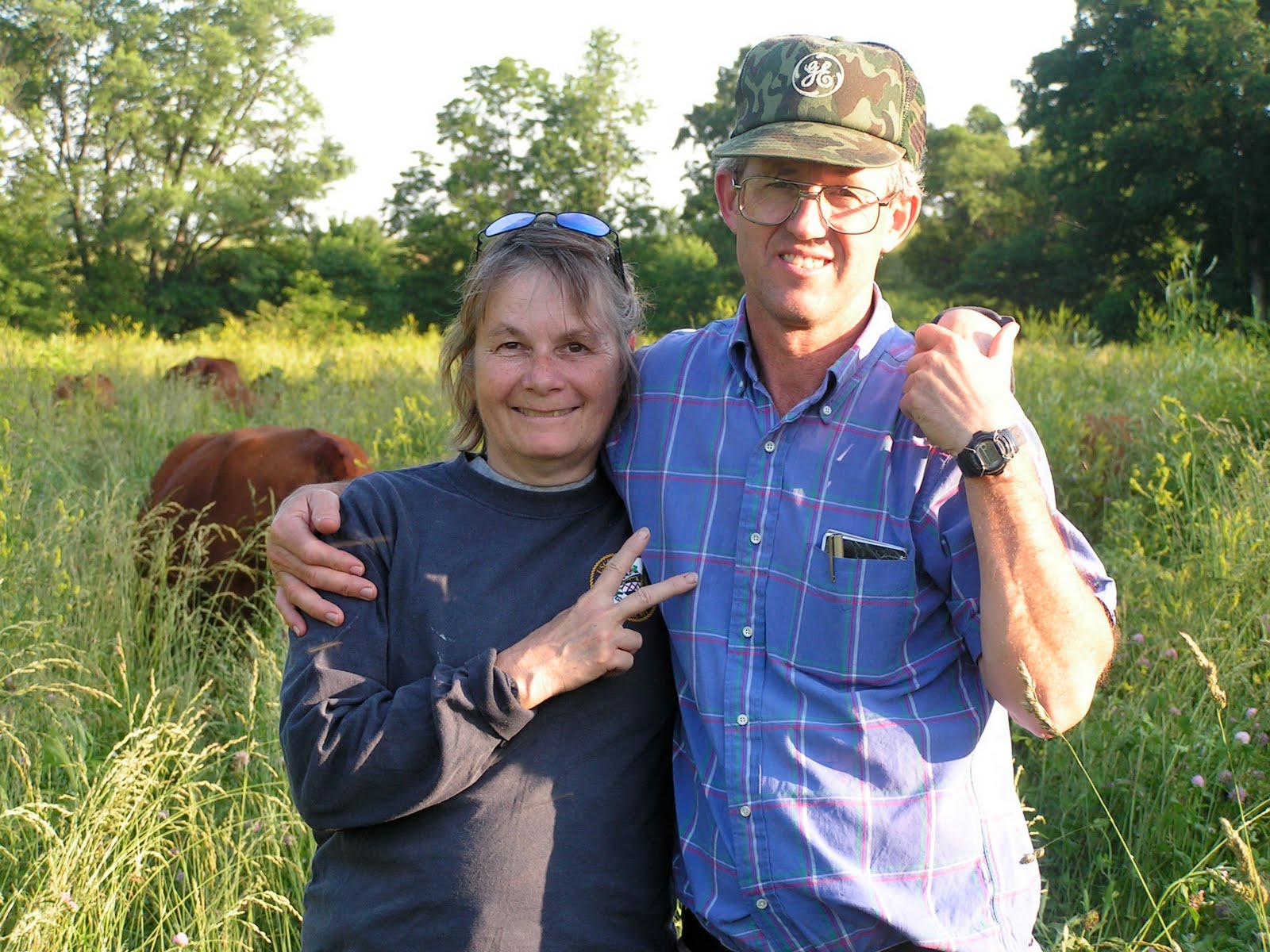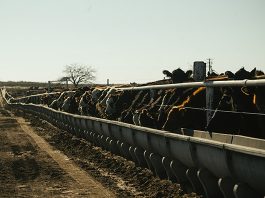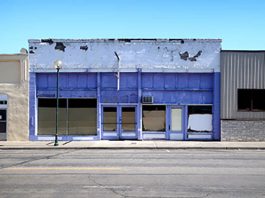In his book “No Risk Ranching” Greg Judy describes how he went from liquidating his cow herd and almost losing the family farm, to paying off the farm and home loan in three years by custom grazing on leased land. If you know Greg’s name, it’s because he has become an evangelist for growing a successful business through leasing and good management of the soil and forage. He shares his experience and knowledge at conferences around the country, in his books, and at an annual school. This series is drawn from a chapter in the book “No Risk Ranching.” It describes how he got started with his first lease. It’s a great example of how giving landowners what they want through good animal management can result in true success. Enjoy!
I had driven by this vacant pasture land about two miles from my farm for many years. The farm was 150 acres; 60 to 70% of it was open land. The rest was overgrown with brush and it had very steep ridges, limited water and had been hayed to death. The only fence on the farm was one strip of road frontage and a section between a neighbor. It also had some good potential: a pretty good base of grass under the small brush, no big brush in the pastures, a small creek running through the property, one decent pond, a one acre lake, a nine acre bottom of gama grass, and it was two miles from my house. So I got the landowner’s number from a neighbor and gave him a call.
The landowner purchased the farm to hunt, fish and build a summer retirement home. Managing the farm was frustrating for them. Every summer they battled the brush only to find that it had grown right back up when they returned. No one else wanted to rent it because there was too much missing fence, and they were thinking of selling the place. Having been raised on a farm, they understood the concept of management-intensive grazing when I explained it. They said if I could keep the livestock out of their pond and lake they would be willing to consider leasing the place to me.
 A tour of the property gave me an idea of what kind of forage I could expect and the challenges to using it. With a map from the Natural Resources Conservation Service* I could measure the open areas, coming up with 90 grazeable acres, and how much perimeter fence it required. Then I estimated the gross income potential. The existing forage base did would not work for stockers so I calculated custom grazing cows as a clean up crew the first year. In the second year I planned to frost seed red clover and graze stockers. My figures looked like this:
A tour of the property gave me an idea of what kind of forage I could expect and the challenges to using it. With a map from the Natural Resources Conservation Service* I could measure the open areas, coming up with 90 grazeable acres, and how much perimeter fence it required. Then I estimated the gross income potential. The existing forage base did would not work for stockers so I calculated custom grazing cows as a clean up crew the first year. In the second year I planned to frost seed red clover and graze stockers. My figures looked like this:
Year 1: March 1 to September 30 = 7 months grazing
30 cows and bull x $10 per month = $310 per month x 7 months = $2170 gross
Year 2: Custom grazing 85 steers in spring turn out
April 1 – August 31 = 150 grazing days
150 grazing days x 85 head x 1.25 lbs gain/day = 15, 937 lbs of custom gain
15,937 lbs of gain x 32¢ = $5100 gross income
Rest pastures 45 days and bring in 85 fall steers:
October 15 – December 15 = 60 grazing days
60 grazing days x 85 head x 1.25 lbs gain/day = 6,375 lbs of gain
6,375 x 32¢ = $2040 gross income
Total for Year 2 = 5100 + 2040 = $7140
Year 3: Custom graze 1.5 steers/acre = 135 steers
April 1 – August 31 = 150 grazing days
150 grazing days x 135 head x 1.35 lbs gain/day =27,377 lbs of gain
27,377 x 32¢ = $8,478 gross income
Rest pastures 45 days and bring in 135 fall steers
October 15 to December 15 = 60 grazing days
60 grazing days x 135 head x 1.35 lbs of gain/day =10,395 lbs of gain
10, 395 gain x 32¢ = $3,499 gross income
Total for year 3 = $12,247
I figured the lease years four through ten would be at least equal to or better than year three because the forage base would be stronger as time went along if I managed the land correctly. I took the seven remaining years and multiplied them by $12,000 to get $84,000 gross income. All ten years totaled $105,500 gross income!

I was getting pretty excited by now about the potential this farm had. I now had the cost estimate of implementing the grazing system ($1378) and the potential gross payback for the ten-year lease, but I didn’t know what the lease would cost and there was still the problem of getting water to some of the pastures. Since the landowners said they could agree to a ten year lease and seemed interested in fixing the water issues if the first year went well, I put together a proposed contract.
You can read all the details of the contract in this chapter of my book, No Risk Ranching. Basically it described the property, how the fencing would be installed, who owned the fencing at the end of the lease period, how the farm would be developed, who was liable for the cattle and any accidents, and that I had 100% control over management of the grazing on the property. I scheduled the yearly payments for a time when I had no other bills due and proposed a lease payment that grew as the health and profitability of the farm grew. I took into account their current income from the hay crop of $150 -$200 per year, and that they were less interested in income and more interested in having the property cared for and improved upon and came up with this:
Year 1 = $300
Year 2 = $300
Year 3 = $350
Year 4 = $350
Year 5 = $400
Year 6 = $400
Year 7 = $450
Year 8 = $450
Year 9 = $500
Year 10 = $500
They signed the contract in January and I was ready to go to work immediately. All winter long I had been cutting, drilling, and painting scrap fiberglass rods that I bought as factory rejects. The first thing I tackled was the perimeter fence around the land that had water. I strung three wires along the gravel road and two wires on the rest of the perimeter fence that did not touch the road. I fenced off the pond and lake. Realizing that the little creek was spring fed, it never went dry the whole summer, even during the drought.
I put up a flyer at the local sale barn looking for 30 cows to custom graze starting March 1. The woman I asked for permission to post the ad came over and checked it out right away saying they would have some registered Charolais with 4 to 8 week calves by their sides at that time. She and her husband came out to look at the farm. Though it was rough looking, I explained how the cows would be moved from paddock to paddock, giving the grass a chance to rest. I told them about the gama grass, how it really kicks in growing when the other cool-season grasses slow down. I promised to do my very best to keep their cows in grass and watch for any health problems and suggested a written contract to prevent any confusion.

The contract was signed in February, giving me one month to finish putting up the fence. I used my coon hunting light to build fence at night after I got off work in town, and I found it a great stress reliever from my day job. I worked 2 to 4 hours each night cutting brush, driving posts, stringing wire. It was great and beat sitting inside all winter watching worthless TV every night. My girlfriend (now my wife) helped me every weekend building fence. Talk about testing a relationship!
Though I only had about 50 of the 90 acres fenced, the 30 cow-calf pairs were delivered the first week of March. Time to graze!
Here’s Part 2 where Greg covers the good (rain) the bad (a drought) and the ugly (the neighbor’s hideous bull in a herd of registered Charolais! :-()
* Would you like help with a map of your place? Click to find your local Natural Resources Conservation Service office.





I want to buy stockers that are weaned from their mothers and put them on stockpiled grass in the winter. I am told that I need to feed hay in the winter in order for them to keep their ruminant warm in order to survive the cold. It sounds like you are feeding only stockpiled grass in the winter for your weaned calves. Is this true? Would it be any better to buy yearlings to go thru the winter on only stockpiled hay?
Thank you for your response.
Tom
Tom,
We winter the calves with the cows. This is our 11th year of letting the cows wean the calves. If a cow gets thin taking her previous spring born calf through the winter, that tells us that she is a heavy milker. She is culled. We want low maintenance animals in our herd. Heavy milking beef cows cost you money because unless you supplement them with energy in the cold weather, they get thin producing to much milk on stockpiled grass.
Some winter stockpile is better than others. Our stockpile is primarily Kentucky 31 Fescue which stays partially green all winter long. Our cows and calves thrive on this winter stockpile. If we are forced to feed our mob of cattle hay for any length of time, their body condition drops. Simply put, most Missouri grass hay is low in quality when compared to freshly grown fall stockpiled grass.
Our coming yearling calves actually do the best of any other age group in the mob. They are getting quality stockpile strips twice per day and a bit of mothers milk to help them along. This bit of milk is not much, but it sure helps the yearlings with their daily energy requirements.
I know from my early custom grazing days with stockers, the owners required me to feed 2 pounds of corn gluten every other day to the 400 pound steers thru the winter. The steers were being moved daily onto stockpiled grass. Only time they got hay was if we had deep snow or ice. The steer owner was concerned about the steers losing weight. We grew a heck of a frame on those steers, when they hit spring grass, they absolutely turned on the weight gain.
Everything that we are talking about here is covered in detail at our upcoming Mob grazing school in May.
Greg
Comments are closed.